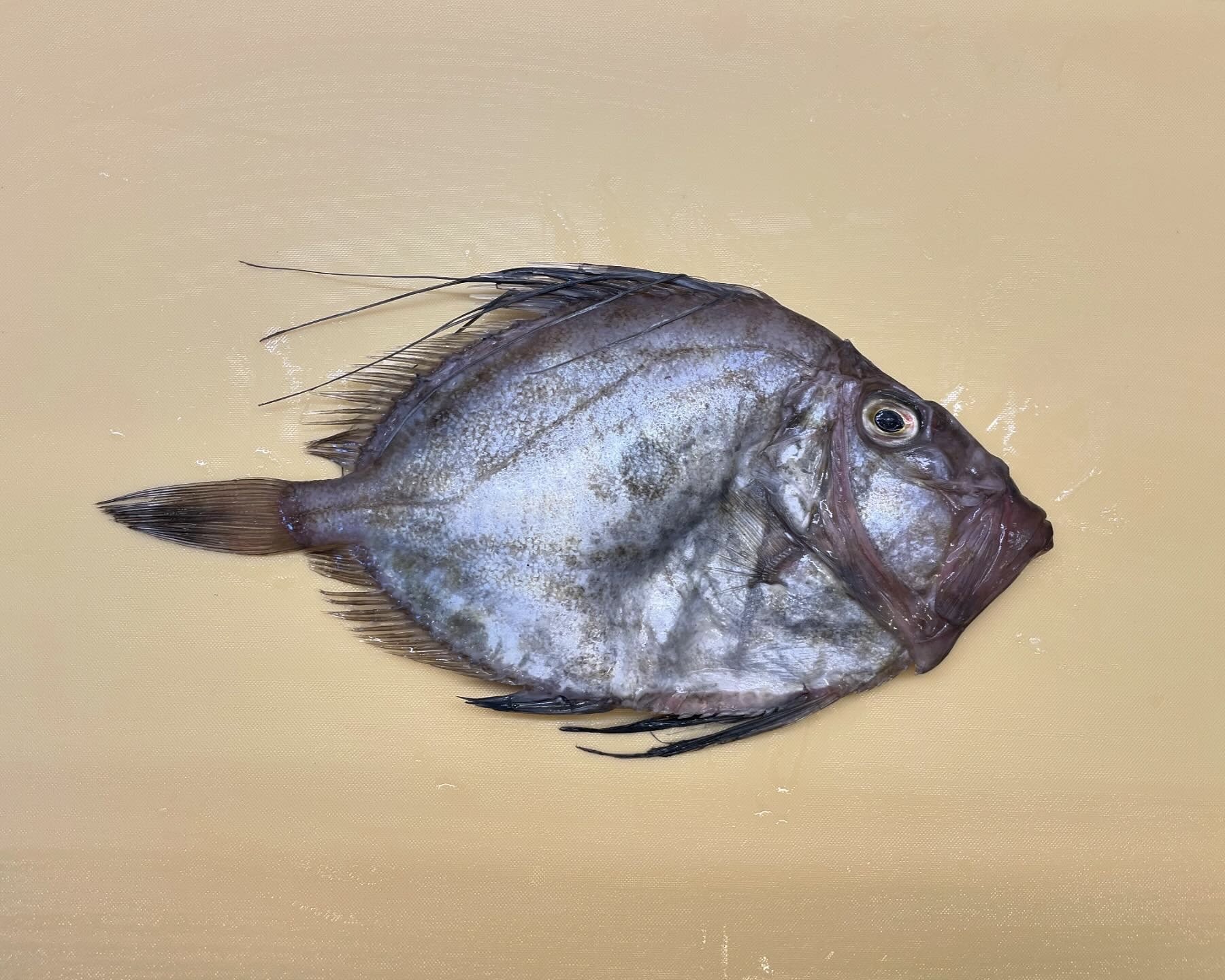
JOHN DORY
Home | Fish & Recipes | John Dory
Zeus faber
Biology
As you can see, john dories are a striking and unique fish, with only two species in their order. They’re found the world over, but are solitary loners. The characteristic eye mark on their side is said to be the thumbprint of St Peter, who hoiked one out of the sea on Jesus’s command. In fact every other country in Europe calls them St Peter’s fish. Except us Brits and no-one really knows where the name john dory comes from. Though some theory says it come from the french word “Jaune doree” (Yellow gloden).
They have an amazing retractable jaw, which they can extend like the tube on a hoover to suck up their prey. Much like this slingjaw wrasse. Their colouring and super slim body means that when they’re head on, they’re almost impossible to see- handy for a predator. Their huge jaw means that even in smaller specimens, you can find some enormous fish in their bellies.
Fishing
You can’t target john dory. They’re solitary predators and are normally caught as bycatch when targeting shoaling fish- like herring or mackerel.
Eating
Careful when handling a john dory. There’s a spine on pretty much every edge of its body. Your best bet is to take a pair of kitchen scissors and trim around the outside of the body, taking of the spiny ridges.
If you’d like to fillet it, watch the video, it's much more akin to working with a flatfish, but bear in mind, it’s jaw and belly cavity account for most of its weight, don’t expect huge fillets! Be sure to save the frame though, john dory stock is second to none.
We tend to just cook them whole, trimmed, as you would a flat fish. They have an exceedingly good flavour and are deserving of their place on some of the fancier menus in London.
Recipes
(Click to enlarge)

